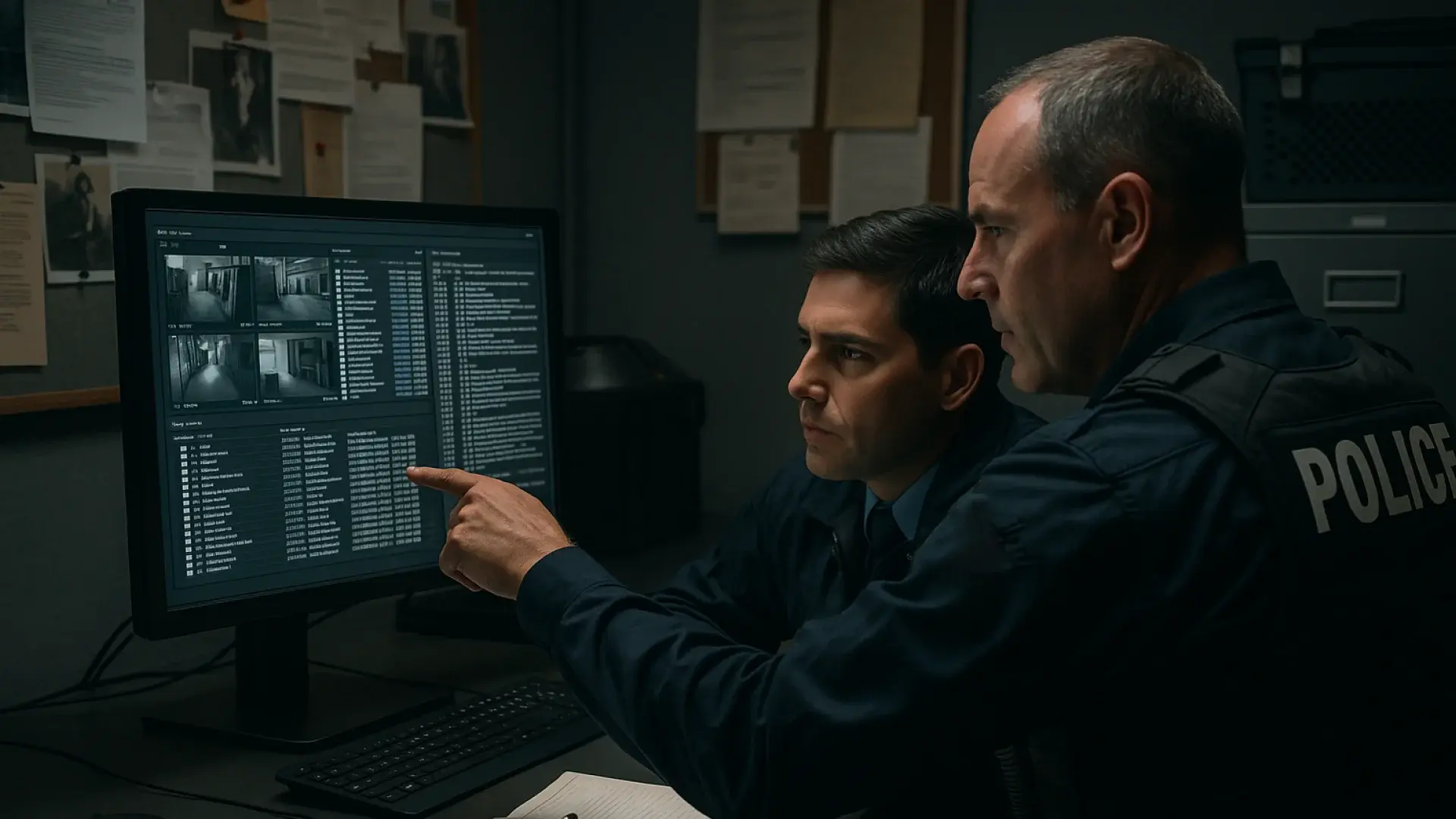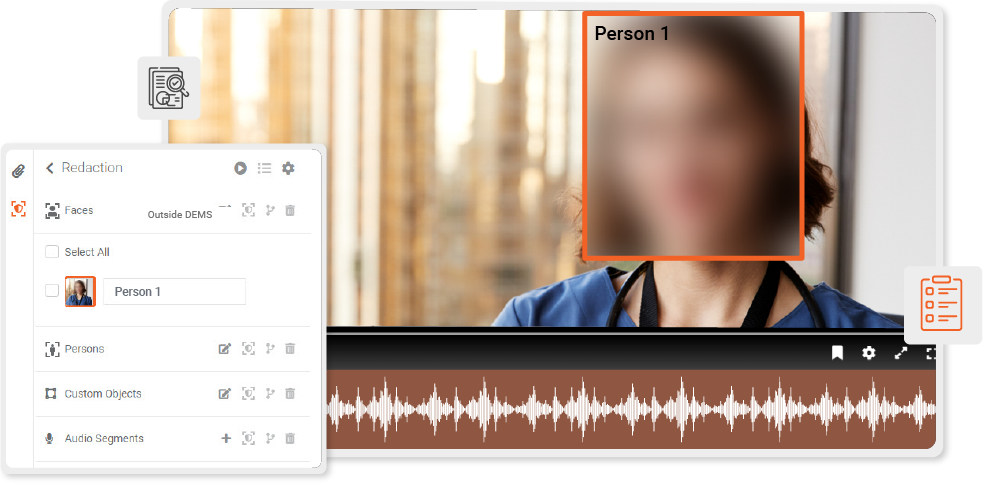The Complete Guide to Unified Redaction for Fraud & Compliance Investigations
by Zain Noor, Last updated: November 18, 2025, Code:

- Bank statements with third-party PII
- Customer correspondence revealing household data
- Surveillance videos capturing uninvolved individuals
- Call recordings from interviews or telecom providers
- Images from inspections or evidence-gathering
The core challenge?
Every one of these data types must be properly redacted before being shared or used as evidence.
Yet most government agencies still rely on separate, fragmented tools to manage each medium:- Adobe Pro for document redaction
- Adobe Premiere / After Effects for video
- Standalone audio redaction tools
- Image editors for static photos
This creates inefficiency, inconsistency, and unnecessary cost, and significantly increases compliance and privacy risks.
Why Legacy Redaction Tools Are Failing Modern Investigation Teams
1. They are not automated enough
Adobe’s semi-automated document redaction requires manual search terms.It cannot automatically detect:
- Names
- Addresses
- Account numbers
- Dates of birth
- National Insurance numbers
- Other sensitive entities
This means investigators are expected to manually read every line of every document.
2. They require hours of manual video and image review
Video redaction is still mostly frame-by-frame in tools like After Effects.Investigators need to:
- Track faces manually
- Mask-moving individuals
- Process long surveillance clips
- This is slow, expensive, and prone to human error.
3. They separate audio redaction from everything else
Many agencies rely on niche audio tools to mask names, numbers, or sensitive phrases in call recordings.
These tools do not integrate with video or document workflows.
4. They are not designed with GDPR or government compliance in mind
Tools like Adobe were not built specifically for:- Law enforcement evidence integrity
- Public sector chain of custody
- GDPR-driven deletion policies
- UK/EU data residency
- Enterprise-level audit logs
You end up doing manual paperwork to remain compliant.
5. They create user fatigue and training overhead
Investigators don’t want to learn:- Four different interfaces
- Four licensing models
- Four ways to import/export files
Public agencies lose countless hours in “tool-switching.”
The Rise of Unified Redaction Platforms
Government agencies worldwide are transitioning to systems that can redact all content types in one platform.
A unified redaction solution includes:
- Document redaction
- Video redaction
- Audio redaction
- Image redaction
- Automatic face detection
- Automatic entity detection (names, PII, sensitive terms)
- Role-based access
- Audit logs
- Case-centric storage
- Automated deletion policies
- Integration with case management systems
VIDIZMO is one of the only providers offering redaction across all media formats, combined with full digital evidence management for teams who need it.
VIDIZMO Redactor + VIDIZMO DEMS: The Most Complete Redaction Ecosystem for Public Agencies
VIDIZMO offers two complementary solutions:
1. VIDIZMO Redactor (Standalone All-in-One Redaction Platform)
Perfect for agencies that need:
- A fast, simple redaction toolset
- Automated detection
- Multi-format support
- Cloud/on-prem deployment
- Affordable, scalable licensing
- PDFs & documents
- Videos
- Audio
- Images
- Fully automated
- Assisted/“semi-auto”
- Manual precision editing
2. VIDIZMO DEMS (Digital Evidence Management System)
Ideal for agencies that need:- Evidence chain of custody
- Case folder structures
- Secure sharing with prosecutors
- Audit trails
- Evidence integrity verification
- User roles & permissions
- CJIS/GDPR compliance
DEMS uses Redactor inside it, meaning all case evidence can be redacted without leaving the secure environment.
Together, these become the ultimate end-to-end redaction and evidence management ecosystem.
How Public Sector Agencies Benefit from Switching to a Unified Redaction System
1. Faster Case Processing
- Reducing the time spent on manual redaction means investigators can process more cases with the same workforce.
- Automated workflows remove redundant manual steps.
2. Lower Licensing Costs
A single platform often replaces:
- Adobe Pro
- Adobe Premiere
- Audio tools
- Image editing tools
- Video redaction plugins
- File conversion tools
One license. One vendor.
3. Stronger GDPR and Evidence Compliance
VIDIZMO offers:- UK/EU data residency (Azure, AWS, on-prem)
- Automated deletion after redaction
- Immutable audit logs
- Chain of custody
- Evidence hashing
- User permissions and role-based access
4. Reduced Human Error
Manual redaction risks missing:
- A name
- A child’s photo
- A witness address
AI dramatically improves consistency.
5. Improved Collaboration Across Departments
Compliance teams, surveillance units, investigators, and legal officers work from the same system.
No more sending files across insecure tools.
Real-World Example: How a Fraud Investigation Unit Benefits
Let’s walk through a real fraud investigation scenario:The unit receives:
- A 40-page PDF from a bank
- A 3-minute surveillance clip
- A 10-minute phone interview
- A customer-submitted image containing uninvolved children
- Document redaction: 60–90 minutes
- Video redaction: 2–4 hours
- Audio redaction: 45 minutes
- Image redaction: 10 minutes
Total = 4–7 hours per case.
Using unified redaction:
- Upload all files
- System detects faces, names, and numbers automatically
- Investigator reviews each item in minutes
Total = 10–20 minutes per case.
Now imagine this multiplied across 5,000 investigators.
This is the scale of time and budget impact VIDIZMO brings.
Why Now Is the Perfect Time for Agencies to Modernize
Government agencies worldwide, especially welfare departments, police forces, tax/fraud bodies, and security departments, are all moving toward:- Automation
- Unified platforms
- Cloud or hybrid environments
- Stronger compliance policies
- Reduced manual workload
- Interoperable systems
Given the volume of evidence and PII that continues to grow every year, redaction must evolve too.
Conclusion
Whether you’re processing fraud claims, surveillance footage, evidence for prosecution, telecom logs, or customer-submitted documents, manual redaction simply cannot keep up.Unified automated redaction, backed by strong evidence management, ensures:
- Faster investigations
- Higher accuracy
- Lower cost
- Stronger compliance
- Secure collaboration
- Scalable modernization for the next decade
VIDIZMO Redactor + DEMS is the future of redaction for public sector agencies.
Start Your Free Trial today - No Credit Card Needed
Jump to
You May Also Like
These Related Stories

Best Redaction Software: Protect Data & Ensure Compliance

Following West Virginia FOIA Rules Using Redaction Software



No Comments Yet
Let us know what you think